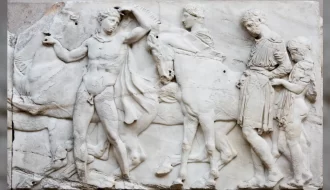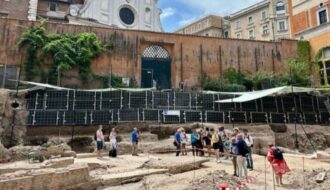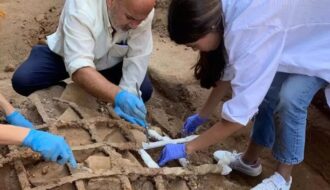Unique And Priceless Large Roman Sculptures Found At Carlisle Cricket Club
Rare head sculptures of two Roman gods have been discovered by volunteer archaeologists during a dig.
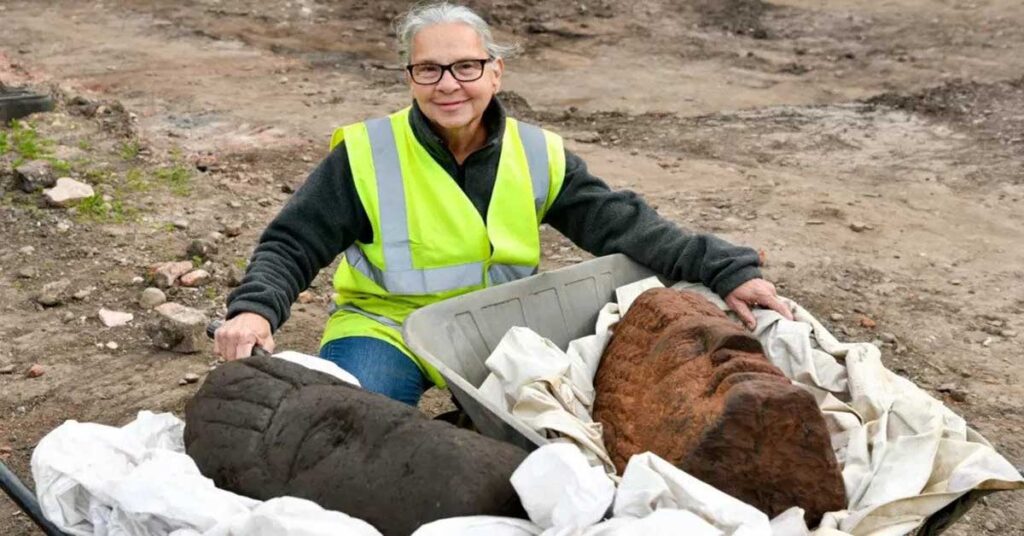
The well-preserved finds were unearthed earlier this week during the latest excavation of a Roman bathhouse at Carlisle Cricket Club.
The sandstone artefacts are thought to date back as far as AD200 and once formed part of full-figure pieces about 12-15 ft (3.5-4.5m) high.
Lead archaeologist Frank Giecco said they were “unique and priceless”.
The stone sculptures, three times the size of a human head, were found at the edge of what was once a cobbled Roman road close to Hadrian’s Wall in the city.
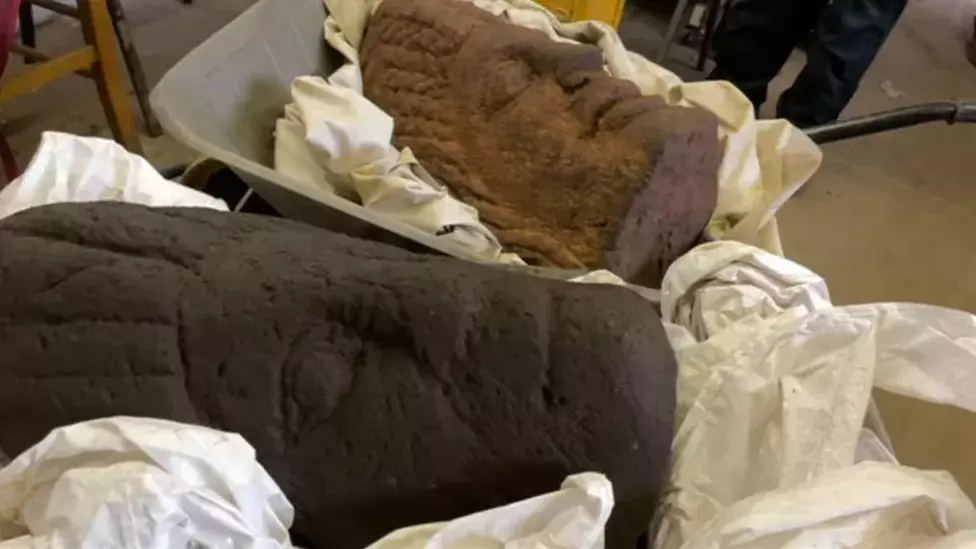

More than 1,000 artefacts – including pottery, weapons, coins and semi-precious stones – have been found at the site since 2021.
Some have been described as being of “international significance”.
But Mr Giecco said: “In 30 years of being an archaeologist I’ve never found a thing like this before.
“It’s just incredible for Carlisle. It just raises the status of this building.”
Mr Giecco said figures were not an unusual find in bathhouses “but sculptures of this size are really special”.
“You can probably count on one hand examples of this kind in Britain,” he said.
Volunteers assisting on the digs have described the find as “really exciting”.

One said: “It was when all the real archaeologists, the professionals, got excited and started crowding round themselves that I realised it was properly something to be excited about.”
Uncovering Roman Carlisle, run by Wardell Armstrong, Cumberland Council and Carlisle Cricket Club, has been supported by government and Heritage Lottery funding.
More than 30 semi-precious stones were found at the site in January.
Pieces found in previous digs over the last eight years are to be displayed at an exhibition at the British Museum in London next year.
Ancient Archaeology


